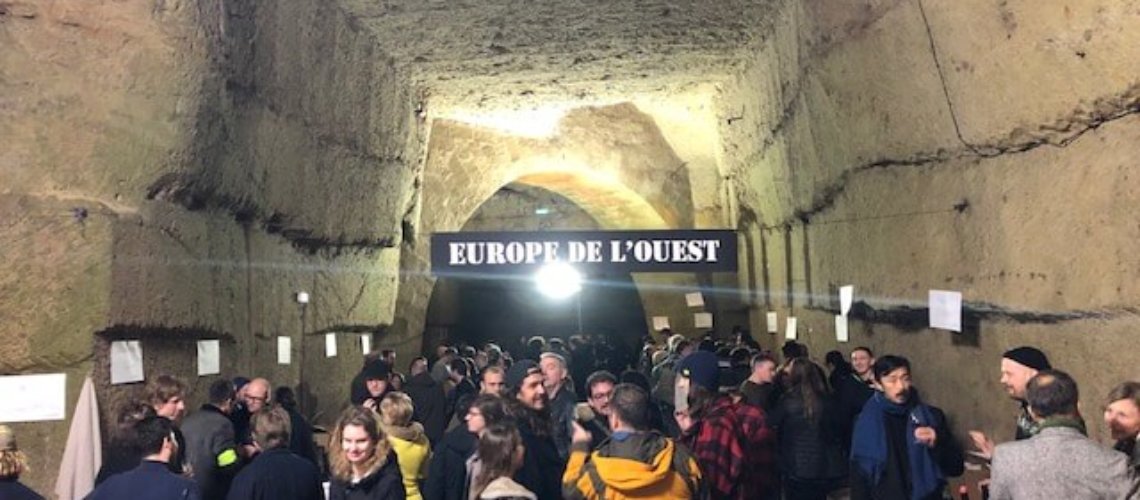Posted on by Barbara D’Agapiti
Back from a three-days trip to the Oltralpe Fair, placed in the much-loved region of the Loire, west of Paris, Nord of France, I can’t help but feel like I fell in love with these previously unknown places. I am definitely far from being the first, or the last to fall for this places’ charms, as it has long been a prized choice for the fortunate French kings and noblemen. During their heyday they chose to build their summer houses, better known as castles, right in this light-infused valley, 2 hours away from Paris. France and its sacred wines have always had a hold on me and I dare anyone who claims differently; this was my first time coming to know the Loire Valley and its wines, and even though it was a short trip, this wine-growing region with its weightless, fine and velvety wines has won me over. My trip was all about going to the natural and biodynamic wine fairs held each year in the charming small medieval towns of Angers and Saumur; besides, I also had the pleasure to help out Valentina Passalaqua, my wine producing friend from Puglia, at Salon St. Jean.
Most of the participants were French wine makers from the Loire, who were given the greatest part of the fairs, but generally there were also producers from other wine-growing regions in France along with a good share of amazing Italian ones as well. All of them joined by a high number of international wine professionals.
These independent wine fairs are located in vibrating places, rich in history and all emanating a sacred vibe. Here are some of them:
- The Sant Jean Salon in Angers was organised inside St John’s Hospital complex, the oldest gothic French hospital, standing as a remarkable example of Medieval civil works, with its chapel, cloister and barn all built by order of King Henry II.
- Salon 1 Grenier St. Jean (XII-XVI) was the place where all food commodities were kept all the while it was a military medieval hospital, turned into a halfway house during the 1598’s Great Plague; Salon 2, at the Hopital St. Jean, now hosts the amazing Jean Lurçat museum and the Contemporary XX Century Tapestry museum, but in the XIII century it functioned as a hospital for the poor and the sick, managed by 30 monks, sisters and lay brothers.
The Grenier St.Jean & Hospital St. Jean events in Angers were organised, as per every year, by the Madavin Association volunteers, also raising funds during the fairs; this non-profit association was created by a group of biodynamic and biological winemakers aiming to contribute to the reforestation of the Madagascar highlands. Its scope of work ranges from offering direct support to the villagers, to planting and upkeeping the lands, or distributing solar panels or general assistance.
Still in Angers, the Les Pènitentes Salon was taking place at Hotel Les Pènitentes, a XV century mansion that takes its name from the religious community founded there in 1640 to host women condemned to prison; so it was basically a womens’ prison and hospice for poor old women, often victims of so many of the times’ prejudice and narrow minded thinking.
The Salon Les Anonymes, at l’Abbaye du Ronceray was placed in the Ronceray Abbey, an all-female abbey built in the XII century. It was the only women run monastic settlement in Angers, and also one of its most important dioceses. The nuns were later on forced to move as the Abbey became a war hospital during the XVIII century.
Moving to Samur, at the Salon La Dive Bouteille, the 20th edition was being properly celebrated with all glasses signed with the following statement: “Nul n’est censé ignorer la Loire, 20 Dive”,
meaning that no one’s supposed to ignore the Loire. What’s more to say? The event was probably one of the most spectacular ones, as it was also held inside the 1811 Ackerman Caves.
This small trip to the Lore really got me to appreciate the famous Vins de Soif, literally wines for thirst, those glou-glou wines, remarkably drinkable with a low alcohol degree: so much so that you can easily drink a bottle in 20 minutes; some of these wines get their weightlessness, their fresh, mineral, at times even salty taste from the river lowlands or the alluvial soils they usually come from.
I got more familiar with the chenin grapes, an amazingly fragrant type that gives somewhat tannic salty wines, with a vibrant tartness and a bittersweet heart, but also with the Breton grapes (Cabernet Franc), typical for the western Loire; the eastern area got me enjoying wines coming from Sauvignon Blanc, Pinot Noir or Gamay e Cot (Malbec) grapes, the latter particularly fresh, with violet and spicy notes, far from the condensed Malbec, the typical commercial interpretation of this wine.
The Pinot D’Aunis e Grolleau grapes were a true revelation: the Pinot D’Aunis wines are a white pepper explosion, touched by hibiscus plants, ginger, grapefruit and spicy citrus. On the other hand the almost disowned Grolleau grape is usually used for rose wines or Gamay blends and now that I had the chance to taste it in its entirety, I took note of the herbal, dark hints, touching on wet soil, the kind of “rustic” acid grape with a low alcohol content.
Wrapping it all up, I’m very grateful to return with a better understanding of the Loire region & of its food-friendly wines, after having bathed in its fairytale-like landscape and its light-infused valleys. I’m always happy to expand my horizons and to grow my expertise: after all, these experiences build confidence and shape my understanding, an essential key to a judge-free knowledge.
This article was originally published on SlowFood.it


